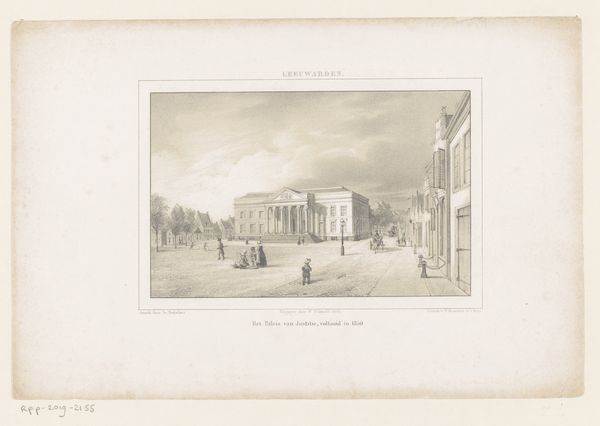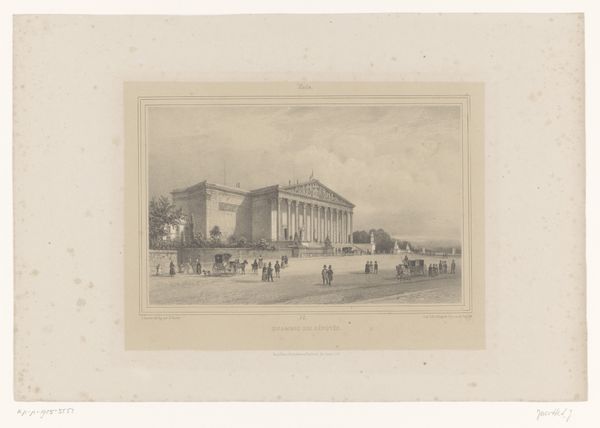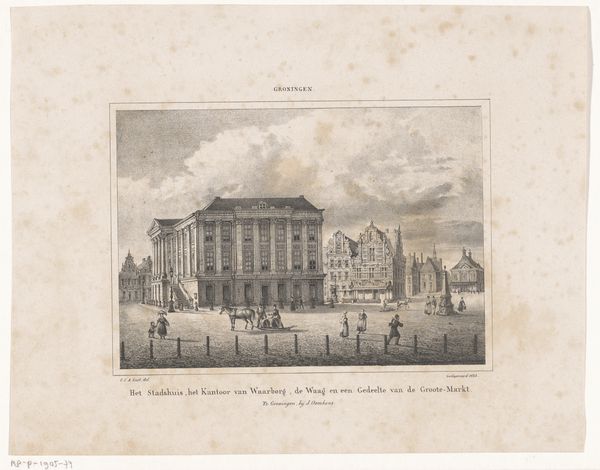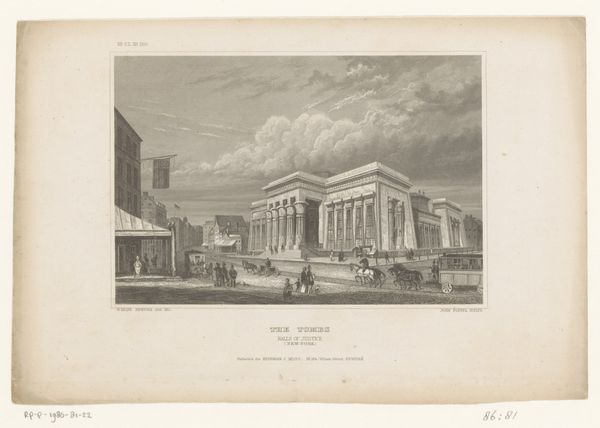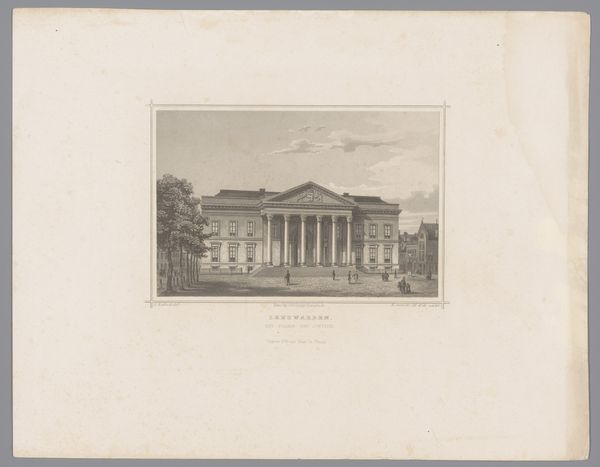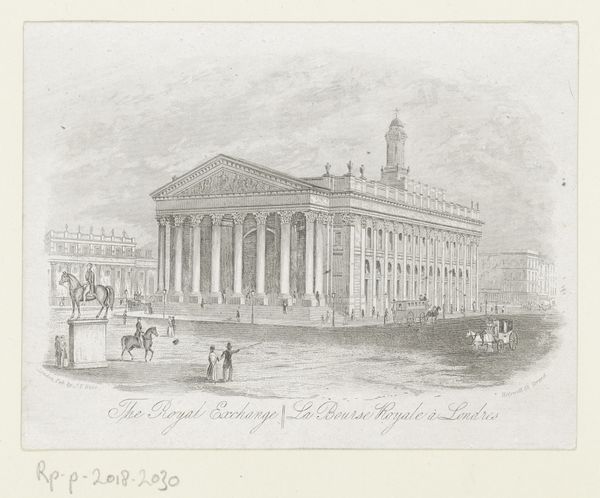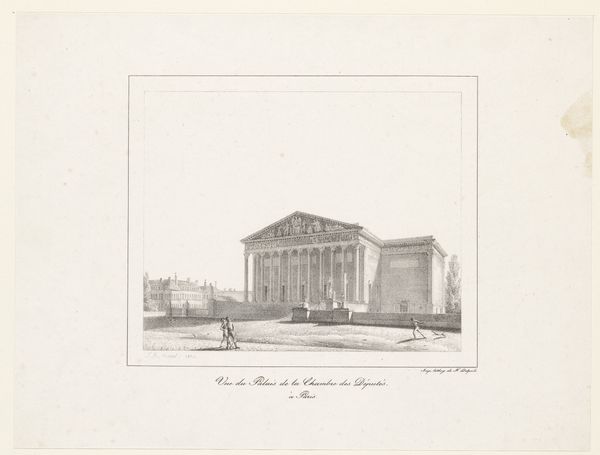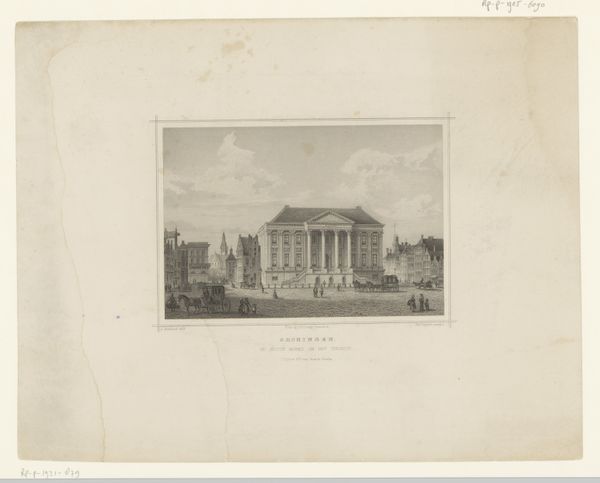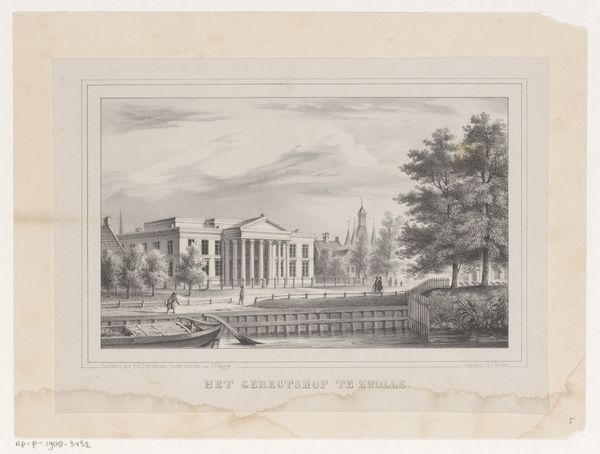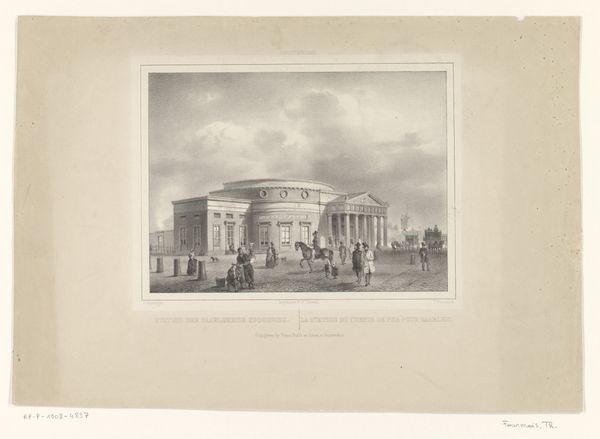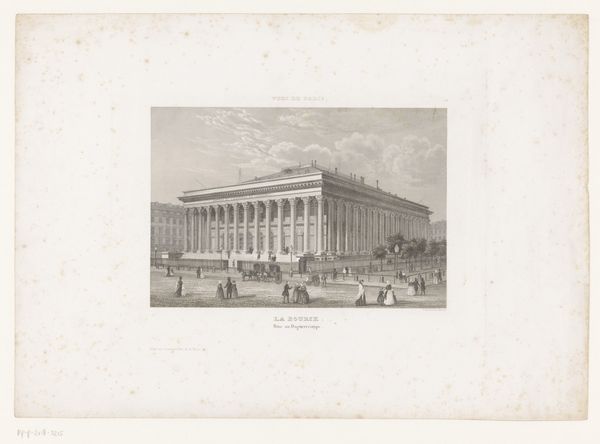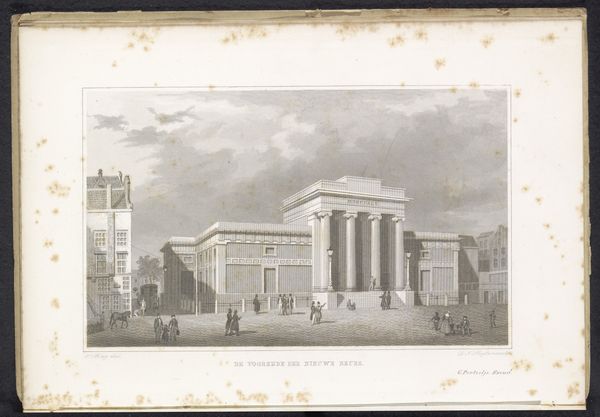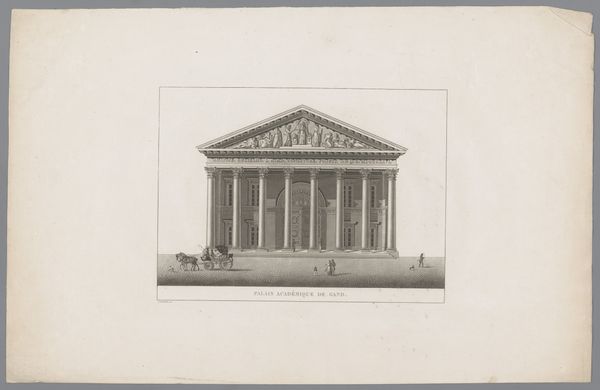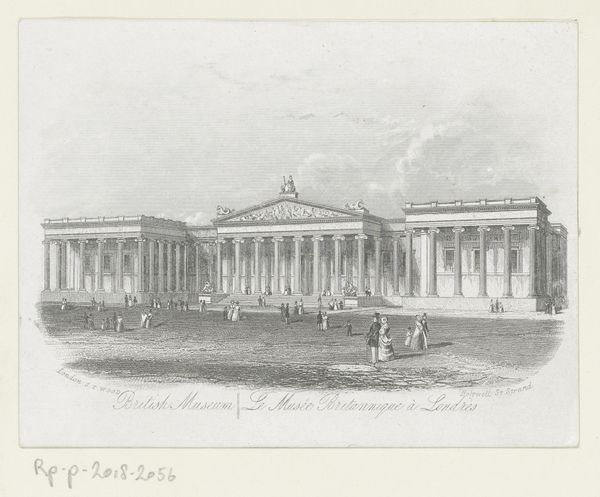
print, engraving, architecture
#
neoclacissism
# print
#
cityscape
#
engraving
#
architecture
Dimensions: height 272 mm, width 362 mm
Copyright: Rijks Museum: Open Domain
Curator: This print from 1828, “Gezicht op het Palais Bourbon te Parijs”, by Jules David, gives us an intimate view of Parisian civic life in the early 19th century. It's an engraving. Editor: Wow, there is such austerity in the geometric rendering! The stark contrast between the imposing, classical facade and the rather grainy activity in front feels strangely poetic. I imagine the artist, obsessing over the angle and trying to figure out how to capture the texture with his graver. Curator: Well, what’s interesting about engravings is the reproductive labor involved; many were printed, and therefore, it was circulated as a visual product for wide audiences. It suggests an emergent Parisian middle class consuming images of political power... of national identity itself. Editor: It also reminds me a bit of those old photographs. They kind of pull you in with an alien world in a recognizable present! Though, seeing the horsedrawn carriages and figures almost frozen in time, there’s a hint of the everyday… Curator: Exactly! Consider how Jules David is trying to represent Neoclassicism as a dominant mode of architectural representation… And look at all these tiny details in the engraving. They speak volumes about material and production, you know? From the quality of the paper, the depth of the cuts to the ink used, it makes this more than just a scene! Editor: Right. More like an objectified scene… It does have that feeling! Although cold, that might be something else too! Like how we try to grasp power through images, rendering it visible, even collectible… Do you think the precision allows some kind of emotional barrier too, hiding a deeper perspective or social critique behind perfection? Curator: Precisely! By replicating existing power dynamics and modes of urban circulation in Parisian life, prints played a pivotal role in shaping understandings of state and citizenship, of social position within city landscapes... It becomes like an urban dream itself! Editor: And yet, the whole thing manages to retain a curious energy. Almost dreamlike... That's the enduring mystery, isn't it? The convergence of a social-historical project and its interpretation by creative soul?
Comments
No comments
Be the first to comment and join the conversation on the ultimate creative platform.
